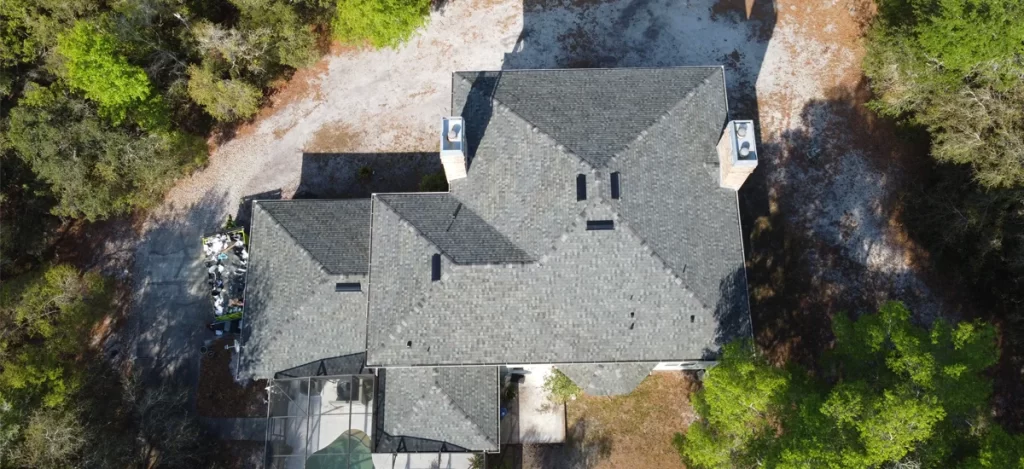Fire-Resistant Roofing Solutions for Areas with Frequent Storms
In regions where storms are frequent, the combination of strong winds, lightning, and potential fires can create a daunting challenge for homeowners. Ensuring your roof is both storm-resistant and fire-resistant is critical to safeguarding your home and loved ones. This guide delves into the best fire-resistant roofing solutions tailored for areas prone to severe weather, exploring materials, technologies, and design strategies that provide maximum protection.
Why Fire-Resistant Roofing Matters in Storm-Prone Areas
Homes in storm-prone areas are often exposed to extreme weather conditions, including strong winds, heavy rain, and lightning strikes. These elements can increase the risk of roof fires, particularly if debris like dry leaves and branches accumulate on rooftops. Fire-resistant roofing not only reduces the risk of combustion during a storm but also provides peace of mind, knowing that your home has an extra layer of protection against nature’s fury.
Fire-resistant roofing is designed to withstand intense heat and flames, often for extended periods, providing valuable time for fire containment or evacuation. When combined with storm-resistant features, these roofs offer a comprehensive defense system, ensuring that your home is safeguarded from multiple threats.
Understanding Fire Ratings for Roofing Materials
Roofing materials are rated for fire resistance based on their ability to withstand exposure to fire. These ratings are classified as Class A, B, or C:
- Class A: The highest level of fire resistance, offering the best protection against severe fire exposure. Materials in this category can withstand direct flame for up to two hours and are ideal for areas with high fire risk.
- Class B: Provides moderate fire resistance, usually up to one hour. Suitable for areas with a lower fire risk.
- Class C: The minimum fire resistance rating, offering basic protection. Materials in this category are generally not recommended for high-risk areas.
Choosing a Class A fire-rated material is highly recommended for homes in storm-prone areas, as these materials provide the best protection against both fires and storms.
Top Fire-Resistant Roofing Materials
Several roofing materials stand out for their fire-resistant properties. Here’s a look at some of the best options:
Metal Roofing
Metal roofing is one of the most popular choices for fire-resistant and storm-resistant roofing. Made from materials like steel, aluminum, and copper, metal roofs are non-combustible and have a Class A fire rating. Metal roofing is also highly durable, able to withstand strong winds, heavy rain, and hail, making it an excellent option for storm-prone areas.
Additionally, metal roofing is energy-efficient, reflecting solar radiation and helping to keep homes cooler during hot weather. This can be a significant advantage in regions with fluctuating temperatures.
Clay and Concrete Tiles
Clay and concrete tiles are naturally fire-resistant and often come with a Class A rating. These materials are dense and heavy, which not only contributes to their fire-resistant properties but also makes them highly resistant to wind uplift and storm damage. The weight of these tiles requires a sturdy roofing structure, but when properly installed, they provide exceptional protection against both fire and storms.
Another advantage of clay and concrete tiles is their longevity. These materials can last for decades with minimal maintenance, making them a cost-effective solution over time.
Slate Roofing
Slate is a natural stone that offers outstanding fire resistance and durability. With a Class A fire rating, slate roofing is ideal for protecting homes in high-risk areas. Its dense composition makes it impervious to fire and highly resistant to severe weather conditions, including high winds and heavy rain.
Slate roofing is also highly aesthetic, adding a touch of elegance to any home. While it is one of the more expensive roofing options, its longevity and durability make it a worthwhile investment for long-term protection.
Asphalt Shingles with Fire-Resistant Treatment
Standard asphalt shingles typically have a Class C fire rating; however, fire-resistant versions are available that offer a Class A rating. These treated asphalt shingles are coated with fire-retardant materials, enhancing their ability to resist fire. They are also engineered to withstand strong winds and heavy rain, making them suitable for storm-prone areas.
Fire-resistant asphalt shingles are a more affordable option compared to metal or slate roofing, making them accessible to a wider range of homeowners. However, they may require more frequent maintenance and replacement over time.
Innovative Fire-Resistant Roofing Technologies
Advancements in roofing technology have led to the development of innovative solutions that enhance the fire and storm resistance of traditional roofing materials. Here are some cutting-edge options:
Fire-Resistant Roofing Membranes
Roofing membranes designed with fire-resistant properties are increasingly popular in storm-prone areas. These membranes are applied as an underlayer beneath the primary roofing material, providing an additional barrier against fire. They are particularly effective when used with metal or asphalt shingle roofs, as they add a layer of protection that can prevent embers from igniting the roof.
Class A Fire-Rated Skylights
Skylights can be a vulnerable point in the roofing system during a fire. However, Class A fire-rated skylights are available, designed to resist high temperatures and prevent the spread of flames. These skylights are made with tempered glass and other fire-resistant materials, ensuring that your roof’s integrity is maintained during a storm-induced fire.
Integrated Fire Suppression Systems
Some modern roofing systems now incorporate integrated fire suppression systems, such as sprinkler systems, that activate in response to heat or smoke. These systems can be particularly useful in areas where wildfires are common, providing an automatic response to the threat of fire. When combined with fire-resistant roofing materials, these systems offer a comprehensive approach to fire prevention.
Design Considerations for Fire-Resistant and Storm-Resistant Roofs
Beyond material selection, the design of your roof plays a crucial role in its ability to withstand storms and resist fire. Here are some key design considerations:
Roof Slope and Wind Resistance
The slope of your roof affects its ability to resist wind uplift. Steeper roofs are generally more effective at shedding wind and rain, reducing the risk of damage during a storm. However, the roof’s pitch should also be compatible with the chosen roofing material to ensure maximum effectiveness.
Overhangs and Eaves Protection
Overhangs and eaves are common areas where embers can accumulate, increasing the risk of fire. Protecting these areas with fire-resistant materials or installing ember-resistant vents can reduce this risk. Additionally, trimming nearby trees and vegetation can prevent debris from collecting on the roof, further reducing fire hazards.
Gutter Systems and Fire Safety
Gutters play a vital role in directing water away from your home, but they can also be a fire hazard if clogged with debris. Installing metal gutters with gutter guards can help prevent leaves and branches from accumulating, reducing the risk of ignition during a fire. Keeping gutters clean and free of debris is essential for maintaining both storm and fire resistance.
Maintaining Fire-Resistant Roofing in Storm-Prone Areas
Maintaining a fire-resistant roof in an area prone to storms requires regular inspections and upkeep. Here are some maintenance tips to ensure your roof remains effective:
Regular Inspections
Conducting regular roof inspections, especially after a storm, is crucial for identifying potential damage or wear. Look for loose or damaged shingles, cracks in tiles, and signs of water infiltration. Addressing these issues promptly can prevent them from worsening and compromising your roof’s fire resistance.
Clearing Debris
Regularly clearing debris from your roof, gutters, and downspouts is essential for preventing fire hazards. Dry leaves, branches, and other debris can ignite easily during a storm, especially if they come into contact with embers or lightning. Keeping your roof clean reduces the risk of fire and ensures that water can drain properly during heavy rain.
Reinforcing Vulnerable Areas
Certain areas of your roof, such as valleys, eaves, and penetrations (e.g., vents, chimneys), are more vulnerable to storm and fire damage. Reinforcing these areas with additional fire-resistant materials or flashing can enhance your roof’s overall protection. It’s also important to ensure that any roof penetrations are sealed properly to prevent water and embers from entering your home.
Cost Considerations for Fire-Resistant Roofing
Investing in fire-resistant roofing for areas with frequent storms may involve higher upfront costs, but the long-term benefits often outweigh the initial expense. Here’s what you should consider:
Material Costs
Fire-resistant materials like metal, slate, and clay tiles are generally more expensive than standard asphalt shingles. However, their durability and longevity can lead to lower maintenance and replacement costs over time. Additionally, these materials can add value to your home, making them a worthwhile investment.
Installation Costs
The installation of fire-resistant roofing materials may also require specialized skills, which can increase labor costs. For example, the weight of clay and concrete tiles requires a reinforced roof structure, which can add to the overall cost. It’s important to work with experienced roofing contractors who are familiar with installing fire-resistant materials in storm-prone areas.
Long-Term Savings
While the upfront costs of fire-resistant roofing may be higher, the long-term savings in terms of reduced maintenance, lower insurance premiums, and increased home value can be significant. Additionally, the peace of mind that comes with knowing your home is protected from both fire and storms is invaluable.
FAQs
What is the best fire-resistant roofing material for storm-prone areas?
Metal roofing is widely regarded as one of the best options due to its Class A fire rating, durability, and ability to withstand strong winds and heavy rain.
Can I install fire-resistant roofing on an existing roof?
Yes, in many cases, fire-resistant roofing materials can be installed over an existing roof, but it depends on the condition of the current roof and the weight of the new materials.
How often should I inspect my fire-resistant roof?
It’s recommended to inspect your roof at least twice a year, particularly after major storms, to check for damage or debris that could affect its fire resistance.
Are fire-resistant roofs more expensive?
Fire-resistant roofing materials are generally more expensive than standard options, but the added protection and longevity often make them a cost-effective choice in the long run.
Do fire-resistant roofs require special maintenance?
While fire-resistant roofs require similar maintenance to other types of roofs, it’s important to keep them clear of debris and regularly inspect for any signs of damage.
Can fire-resistant roofing lower my insurance premiums?
In some cases, installing a fire-resistant roof can lead to lower insurance premiums, as it reduces the risk of fire damage to your home.
Conclusion
Choosing fire-resistant roofing solutions for areas with frequent storms is a wise investment in the safety and longevity of your home. By selecting the right materials, incorporating innovative technologies, and maintaining your roof properly, you can ensure that your home is protected from the dual threats of fire and storms. While the initial costs may be higher, the peace of mind and long-term savings make it a smart decision for homeowners in high-risk areas.














